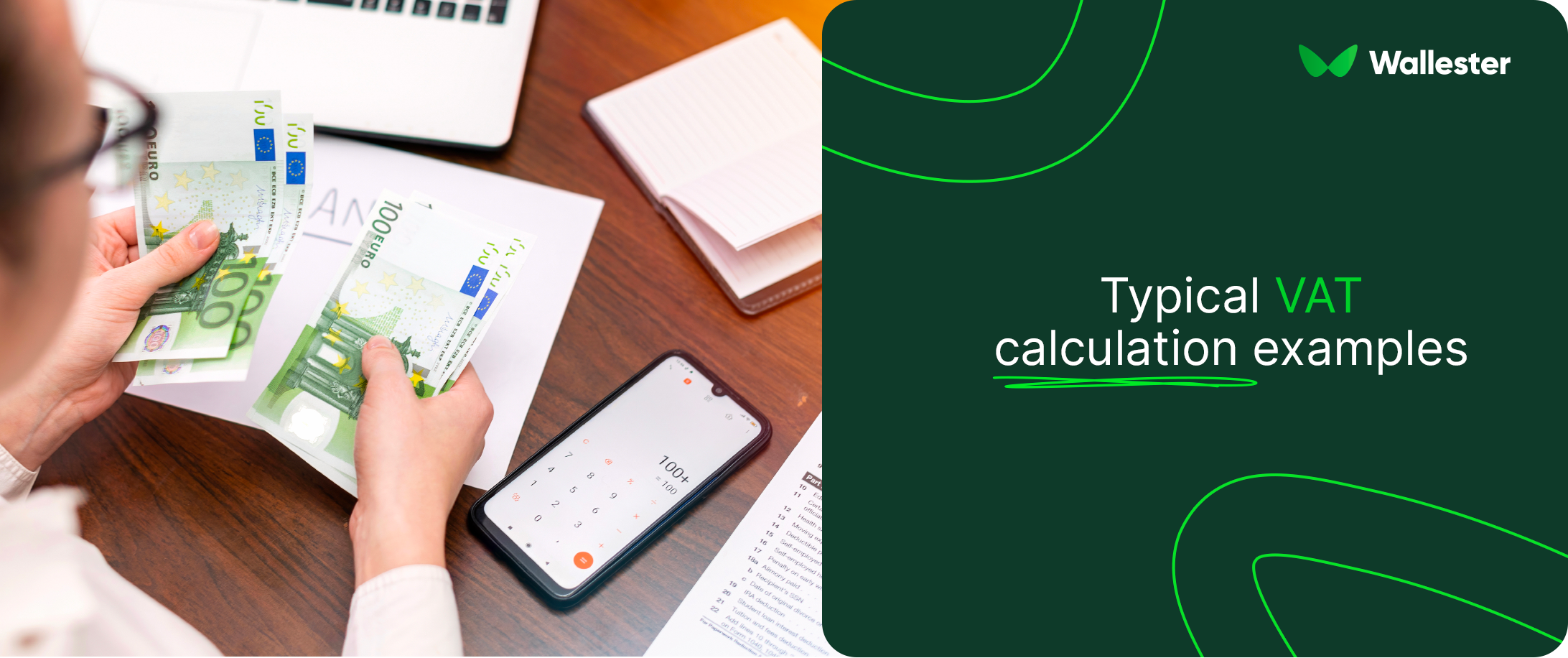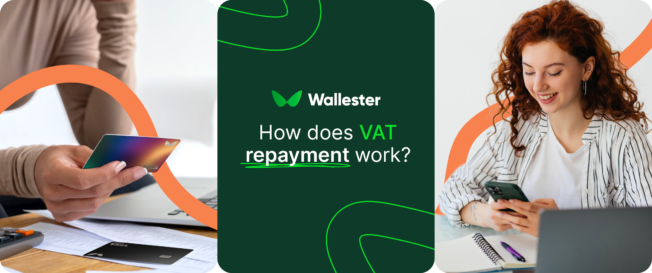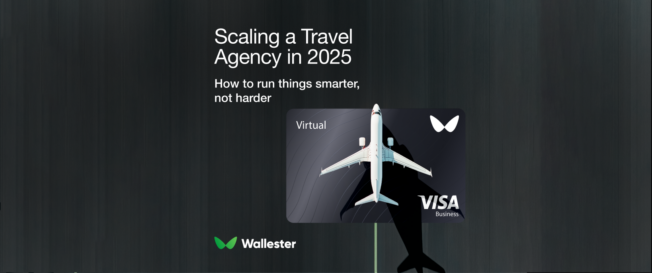Your company is eligible for a VAT repayment if the VAT charged from customers (or output VAT) is lower than that paid to suppliers of goods and services (VAT input). In such a situation, HM Revenue and Customs (HMRC) will repay you the difference.
Filling in your VAT return, you need to note that:
- Box 3 is for a total sum of VAT charged
- Box 4 pertains to the total amount of VAT paid.
If the figure shown in Box 4 is higher than the one in Box 3, your repayment sum will be the difference between Box 4 and Box 3.
The figure in Box 5 of your VAT documents shows how much you’re repaid.
Typical VAT calculation examples

Let’s consider the two most common examples of VAT calculation.
Example 1.
Andrew is an entrepreneur. He deals with auto service. Last quarter, he charged his customers £1,800. Andrew paid suppliers £1,200 in VAT. At the end of the quarter, he fills in his VAT form:
- Box 3 (output VAT): £1,800
- Box 4 (input VAT): £1,200.
Andrew is not eligible for a VAT refund because the figure in box 4 is lower than in box 3.
Example 2.
Helga owns a marketing agency. She charged her clients £2,500 of VAT. Helga paid suppliers £2,800 in VAT. Then, the sums in her VAT return will be as follows:
- Box 3 (VAT charged): £2,500
- Box 4 (VAT paid): £2,800.
Helga is eligible for a VAT refund of £300 (the difference between box 4 and box 3) because she charged customers less VAT than the corresponding sum on business purchases.
How long does it take?
Usually, tax authorities make repayments within 30 days after getting your tax return. This period doesn’t include the time needed to check if your form is correct. The starting point for the 30-day period is when HMRC receives your VAT tax return. The ending point is the refund approval date, not the day HMRC pays you.
If you submit your banking account details to the tax office, they will transfer the sum they owe you to your bank account. Otherwise, authorities will send you a cheque (a payable order). You must return outdated cheques or ask them to replace the lost ones.
You can change the bank details for VAT repayments and track them online through the governmental programme “Making Tax Digital.” If you don’t receive any information from HMRC after 30 days, contact them.
VAT refund specifics
There are a couple of cases when refunds are handled differently. The most common of them are described below.
Your accounting period started before 31 December 2022
You can get compensation or, in other words, a ‘repayment supplement’ if you haven’t received the refund you are owed from HMRC after 30 days.
The reimbursement mentioned above is the highest figure among £50 and 5% of your VAT repayment sum.
If you file your return before the end of the tax period, the count of days starts at the end of this period.
You won’t get a repayment supplement in such cases:
- The tax office received any of your VAT returns after your payment deadline.
- The errors you made in the return decrease the refund amount by 5% or £250, whichever is higher.
- Some of your earlier returns missing before HMRC received your current return.
The accounting period for your company started on or after 1 January 2023
If HMRC hasn’t paid you after 30 days, you can qualify for repayment interest. The minimum rate is 0.5%, and the maximum is the Bank of England’s rate minus 1%.
Overseas bank account repayments
You are entitled to cross-border refunds when you don’t have a UK address and banking account and are unable to open one.
Your company takes repayments on your overseas bank account after filling in the form using your Government Gateway ID. You can get such a payment:
- If you have a banking account in pounds sterling.
- When the company’s name is associated with the business owner or an authorised person with a Government Gateway ID.
In case you need a new cheque or other way of repayment
You can also ask HMRC to do the following:
- send the refund to another account if you are not VAT-registered anymore
- send the repayment to your bank account placed in your business tax account
- send another cheque if you’ve lost yours or it’s outdated
- use the refund to pay another tax.
What is VAT Fraud?
Every misleading action from taxpayers for HMRC, such as incorrect VAT amount, supplier name, address, and contact details, is considered fraudulent tax evasion. It can lead to severe consequences for the company. The firm will be fined with penalties or indicted for the crime, which could mean a lengthy sentence in prison, depending on the seriousness of the case. Indirect VAT fraud can be done by a third-party accountant. From time to time, governmental organisations provide further checks to ensure that a taxable person or a company registered for VAT purposes conducts business honestly.
How do innovative solutions ease your VAT repayments?
The accuracy of your VAT return impacts your VAT refunds, so you need an efficient accounting application that fulfils your business needs. Consider Wallester’s Business Solutions. Our product enables real-time transaction monitoring, detailed business expense reporting and seamless business management. Employees can upload invoices via mobile devices for diligent bookkeeping.
With our reliable expense monitoring software, the accuracy of your reports will increase. So you can freely submit tax forms to reclaim your VAT without worrying about possible penalties or even more severe consequences for your business.
Does HMRC refund overpaid VAT?
How do I get my VAT refund?
Can I claim VAT back without a receipt?



